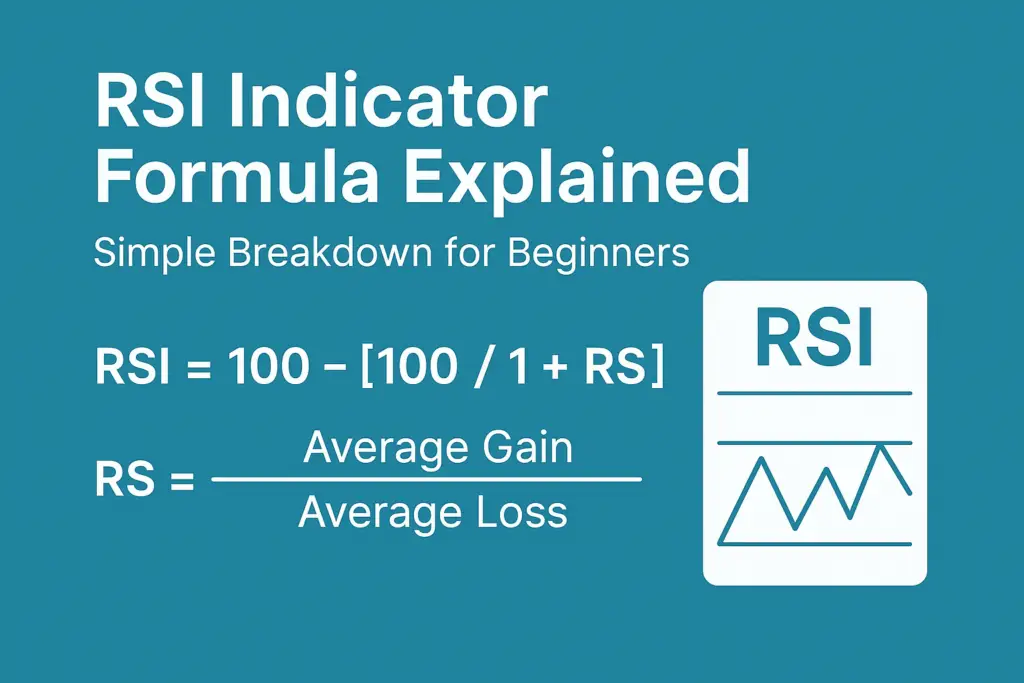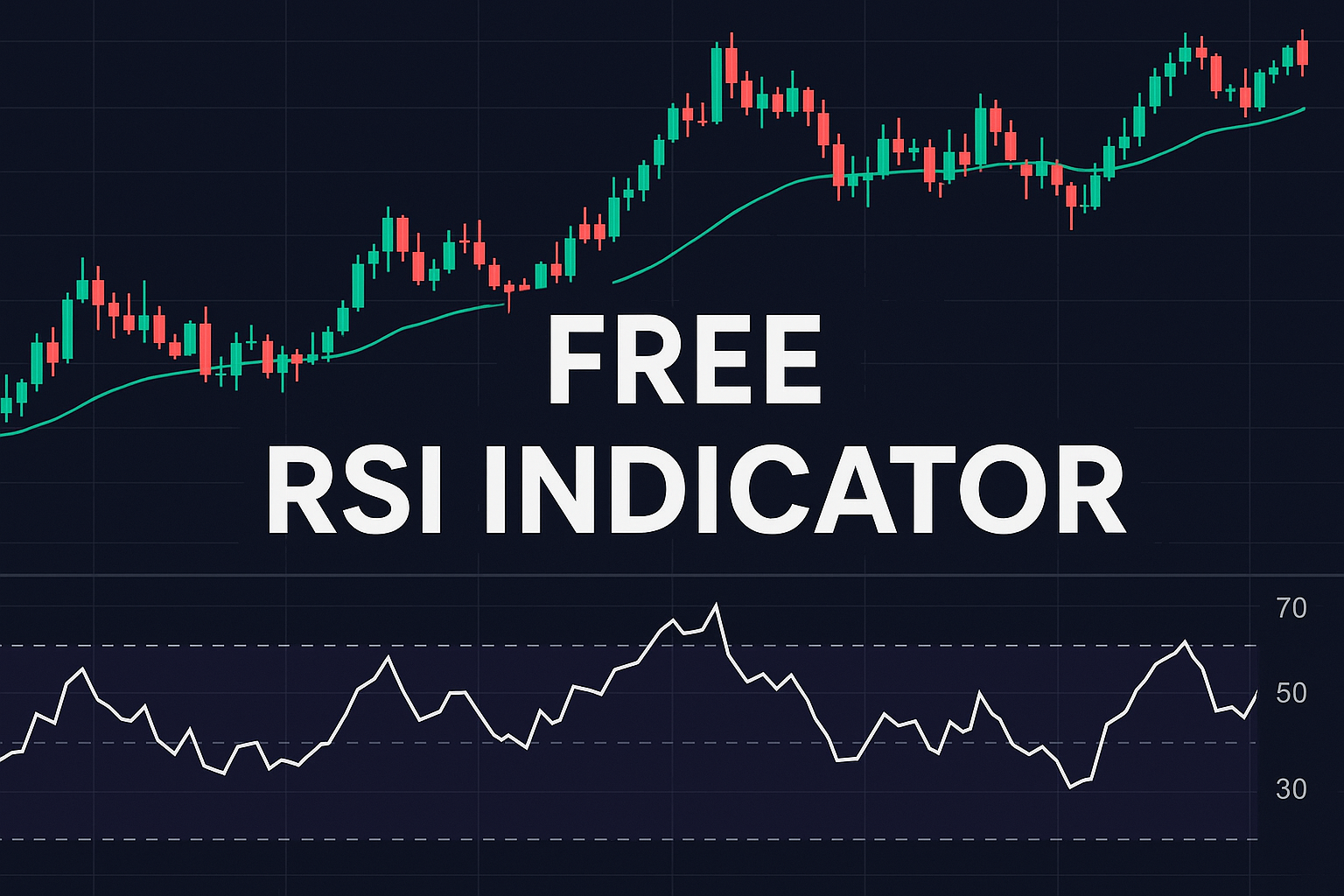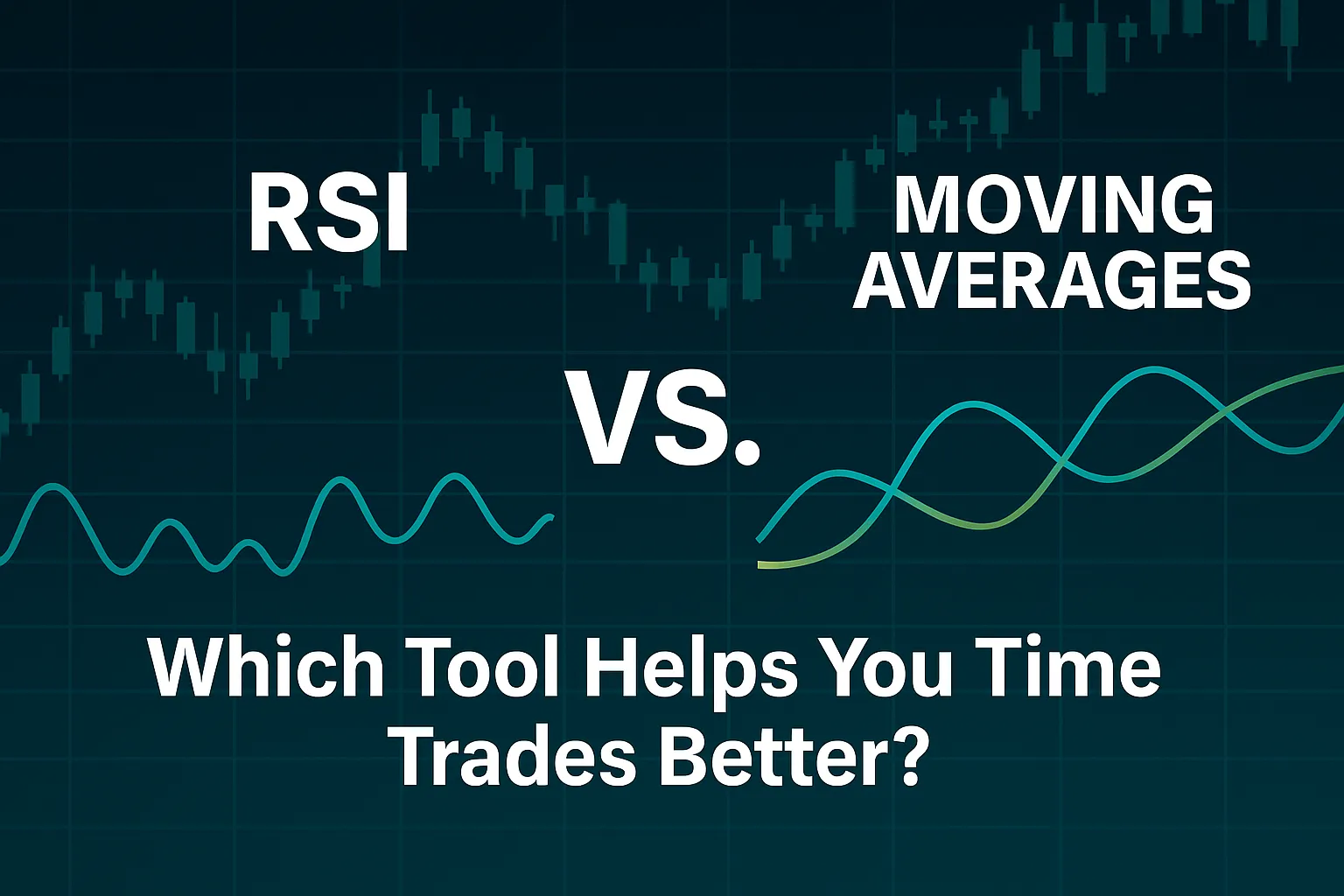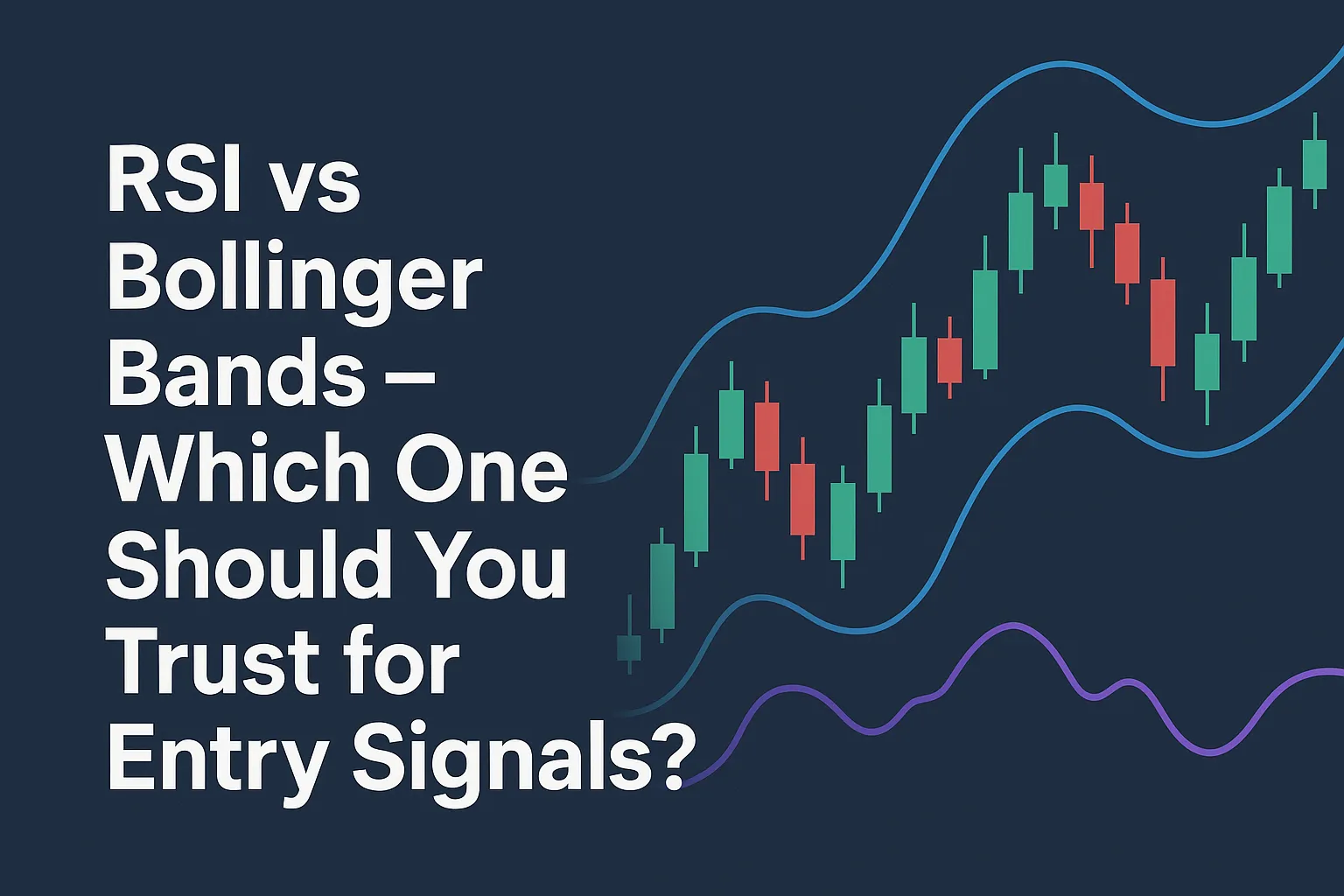RSI Indicator Formula Explained – Simple Breakdown for Beginners
The RSI (Relative Strength Index) is one of the most beginner-friendly trading indicators. But do you know how it’s calculated?
In this post, we’ll explain the RSI formula, how it works, and why it matters — in plain language anyone can understand.
What is the RSI Formula?
The standard RSI formula is:
RSI = 100 – [100 / (1 + RS)]
Where:
RS = Average Gain over X periods / Average Loss over X periods
Most traders use a 14-period setting, which means the formula looks at the last 14 candles on the chart.
Step-by-Step RSI Formula Breakdown
Let’s break it down into simple steps:
- Calculate average gain over the last 14 periods
- Calculate average loss over the last 14 periods
- Divide gain by loss to get RS (Relative Strength)
- Plug RS into the main RSI formula
- Get the final value (between 0 and 100)
RSI Example (Simple Numbers)
Let’s say:
- Average gain over 14 periods = 1.2
- Average loss over 14 periods = 0.8
Then:
- RS = 1.2 / 0.8 = 1.5
- RSI = 100 – [100 / (1 + 1.5)]
- RSI = 100 – [100 / 2.5] = 100 – 40 = 60
So, the RSI value would be 60.
Why the RSI Formula Matters
Understanding the formula helps you:
- Trust the indicator more
- Avoid relying blindly on buy/sell signals
- Adjust RSI periods for better accuracy
- Use RSI with more confidence in different markets
Should You Manually Calculate RSI?
No — trading platforms like TradingView, MetaTrader, and most apps calculate RSI instantly. But knowing the logic behind the number gives you a trader’s edge.
Conclusion
The RSI formula might look complex, but it’s just math behind a powerful tool. Once you know how it’s calculated, you’ll start using RSI more wisely in your trading.
🔍 FAQs
What is the full formula of RSI?
RSI = 100 – [100 / (1 + RS)], where RS is average gain divided by average loss.
Why is RSI calculated using 14 periods?
14 is a standard setting recommended by the creator, J. Welles Wilder, for a good balance between sensitivity and stability.
Can I use a different period like RSI 9 or RSI 21?
Yes. Shorter periods = more sensitive. Longer periods = smoother signals.
Does the formula change for crypto, stocks, or forex?
No — the formula is the same across all asset classes.





